Aaron Cato, Extension Specialist, Horticulture IPM, University of Arkansas
Broad mite continues to be a sporadic issue in Blackberry across the Southeast. In bad years infestations can be found across the region, but every year we observe serious infestations in Arkansas. This pest can severely limit plant growth, result in high levels of yield loss and growers in the entire region should be scouting each year. Get information about broad mite biology, management and the challenges it presents to blackberry growers.
Broad mite management is often not simple due to the small number of miticides that are effective. Agri-Mek and Magister are currently the only miticides that offer good-excellent suppression of broad mite infestations, and Magister can be hard to find at times. Additionally, these miticides both have a 7-day preharvest interval which often complicates their use in primocane fruiting or late floricane fruiting varieties. This means that growers often have to choose between harvesting or spraying to knock back broad mite populations.
In 2020 the Southern Region Small Fruit Consortium funded a research grant to determine if any effective miticides with shorter preharvest intervals existed, with the idea that these data could support potential IR-4 registration. Shared below are preliminary results from this trial, that mainly focused on the potential use of Portal. This miticide recently received an expanded label containing caneberries and had previously shown promise for broad mite management in peppers, but most importantly, Portal only has a 1-day preharvest interval.
Portal Efficacy Trial Design
The efficacy of Portal was assessed with two separate spray trials compared to known standards in commercial blackberries in Arkansas. These trials were performed in a grower field where broad mite injury was easy to find and preliminary sampling indicated broad mite numbers to be well above threshold (1-5 per leaf). Trials were utilized a randomized complete block design with 4 replications of each treatment in 5 plant plots with 3 plant buffers between each plot. Cane damage ratings were taken at each sampling date, with 10 random canes within the 5-plant plot examined and rated from 1-5 as shown in figure 1. Leaf samples consisted of 10 leaflets, from 10 unique leaves, pulled from the first node with unfurled leaves (generally the 3rd node from the terminal) and were taken back to the lab where the number of adults, immatures, and eggs were counted per leaf. Trial 1 assessed 5 miticides (results from Portal and Agri-Mek only are shared here) and the untreated check (UTC), and a second application was made 21 days after the first (21 DAA). Trial 2 compared Portal with two known standards, Magister and Agri-Mek, as well as the UTC.
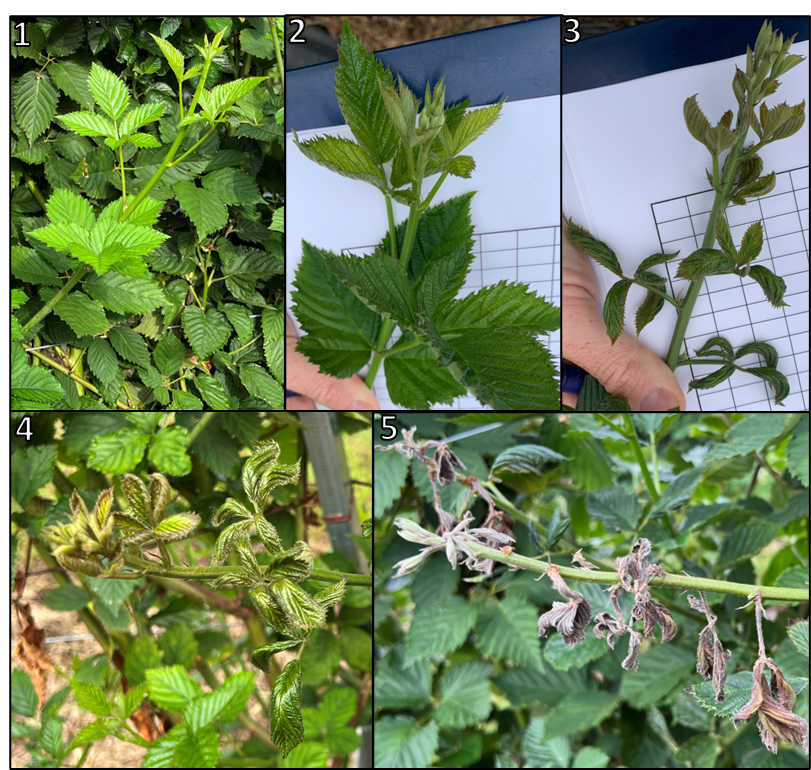
Results from Trial 1
Results from the first trial indicated that Portal was able to suppress broad mite populations as good as Agri-Mek over a 7-day period compared to the UTC (Figure 2). Broad mite populations rebounded much more quickly in plots containing Portal around 10 days after first application and were well above threshold 14 DAA (Figure 2). When considering damage ratings, Portal and Agri-Mek were similar 14 DAA, but at 21 DAA excessive damage was observed in Portal (Figure 3). After the second application (21 DAA), broad mite numbers and damage ratings in Portal plots crashed once again, but did not look as good as Agri-Mek. This likely indicates that Portal could be a short-term solution for broad mite and potentially should be sprayed on tighter intervals if issues persist.
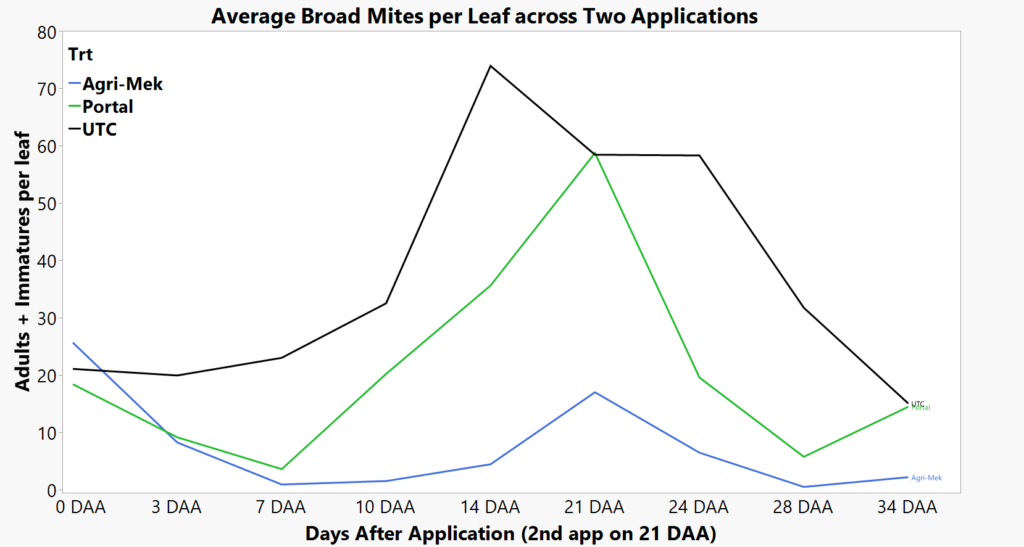
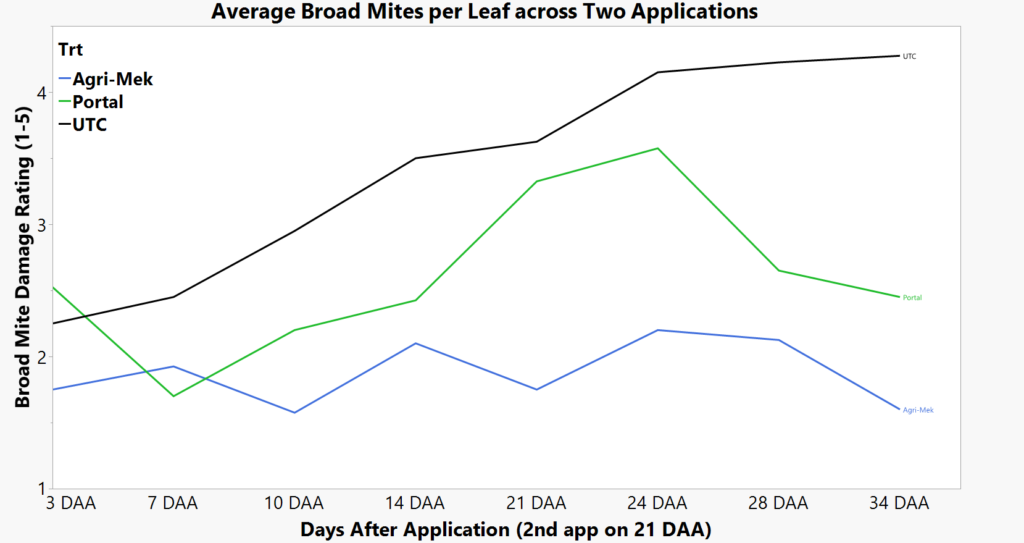
Results from Trial 2
Results from the second trial indicated that all 3 miticides (Portal, Magister, and Agri-Mek) were able to knock back excessive broad mite populations (Figure 4). Magister and Portal exhibited less reduced residual control compared to Agri-Mek, with populations bouncing back to 3-4x threshold by 13 DAA. Samples could not be assessed for 21 DAA as this trial was accidentally over-sprayed by the grower. Damage ratings in this trial indicated an excessive 3.5 rating at 0 DAA when initial applications were made, and all three miticides were able to reduce ratings under 3 by only 7 DAA. These results indicate that Agri-Mek was most effective with the best residual control, and both Portal and Magister would likely warrant a second application within 14 DAA if broad mite persisted.
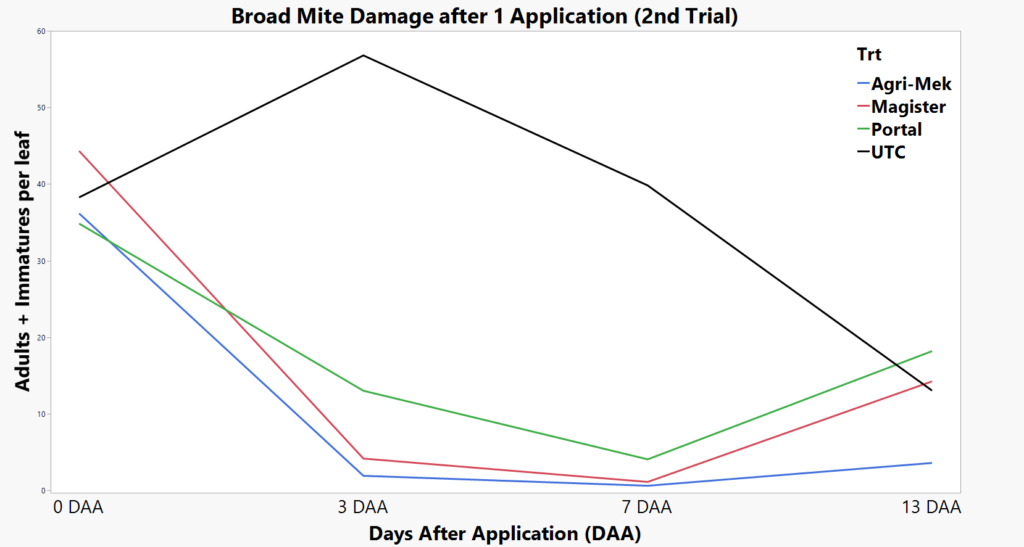
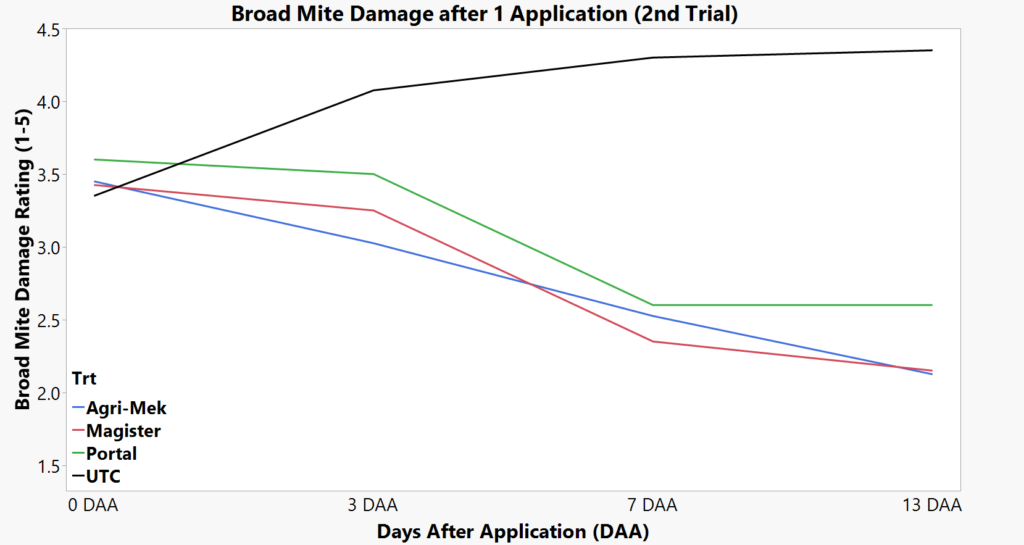
How Should Portal be Utilized?
Our results indicate that Portal is an excellent option to utilize during harvest. Agri-Mek continues to provide excellent control with great residual, but a 7-day preharvest interval hampers its usefulness. Portal is a good option for growers that are either looking to finish out floricane harvest or need to protect developing fruit while harvesting primocane fruiting varieties. Results from both trials indicate that Portal will knock back damaging broad mite populations and limit the amount of plant injury that is observed, while offering a 1-day preharvest interval. We would likely expect higher efficacy in real-world applications, as less reservoirs for reinfestation would exist compared to our small plot trials. However, any grower that uses Portal should continue to scout for damage and mites. A second portal application of Portal should only be considered 14 days (label restriction) after the first if harvest is ongoing, and either Agri-Mek or Magister should be prioritized for a second application to help reduce the likelihood of resistance.
If you have any questions about our trials or when an application of a miticide may be necessary for broad mite, please feel free to call Aaron Cato at 479-249-7352.